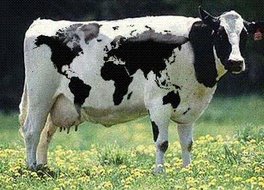This sounds like sense, right? We're not finding them, and the one's we've found were probably sporadic cases, so our BSE scare died with only a questionable epidemic (by definition, we had an epidemic, but practically, we didn't). So we cut down testing from (on average) over 200,000 animals a year to testing 40,000. We shut down extraneous testing facilities. We save the taxpayer's dollar.Saying the prevalence of bovine spongiform encephalopathy in the U.S. cattle herd is "extraordinarily low," and doesn't warrant ongoing costly testing and tracking programs, USDA will shutter the Pacific Northwest's only BSE testing laboratory on March 1.
USDA to close BSE lab By Tom Johnston on 2/26/2007 for Meatingplace.com
The Washington State University lab opened after the nation's first BSE case was discovered in nearby Yakima Valley in December 2003, but only two other infected cows have been found, even after the testing of 759,000 animals, including 45,000 in the Northwest.
USDA Spokewoman Andrea McNally told the Associated Press the lack of additional cases spurred the agency's decision to downsize the program and target only 40,000 animals per year. The government plans to close the WSU facility and several others as part of a plan to cut testing by more than 90 percent.
Well, maybe. According to NASS, 4,775 cattle were slaughtered in 1995 (the last year with available data). If we wanted to find a single positive animal in that group, with a perfect test, we would need to test 3,707 animals every year at slaughter. We don't have a perfect test, but we don't know its sensitivity; with the less-than-perfect specificity of our screening test, we'd get a lot of false positives and waste a lot of money. Still, 3,707 is a lot fewer than 40,000.
So what if we're trying to detect BSE in the entire country. According to NASS (again), there were 106,112,000 cattle in the US on January 1, 2006. To detect a single positive animal in that group, with a perfect test, we would need to test just over 1,000,000 animals. That's a lot more than 40,000, and it would just go up with imperfect sensitivity.
So what is the best option? Are we just going midway between 4,000 and 1,000,000 by choosing 40,000? Are we basing that estimate on a different number (maybe the number of downer cows per year)? Or are we playing politics with diagnostics . . . again?

No comments:
Post a Comment